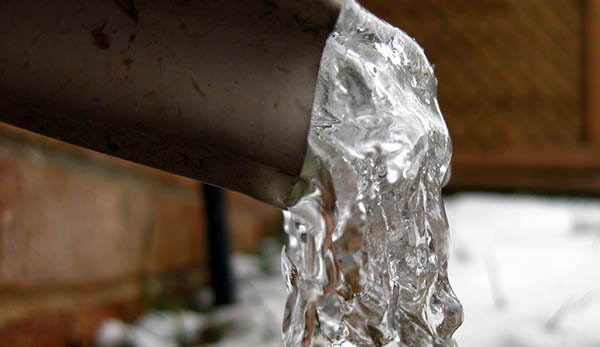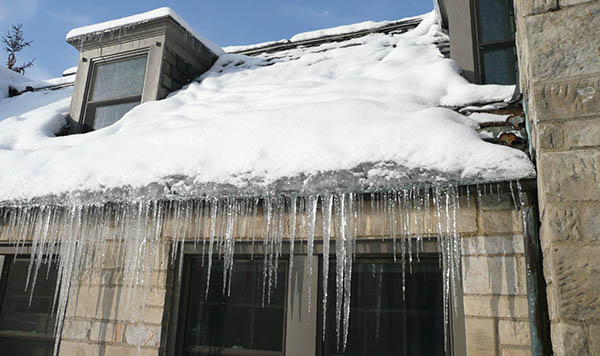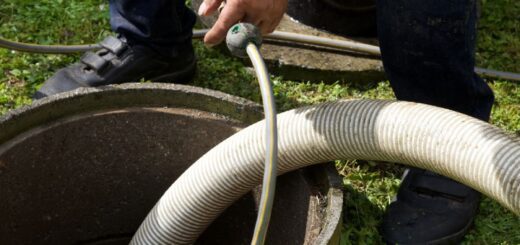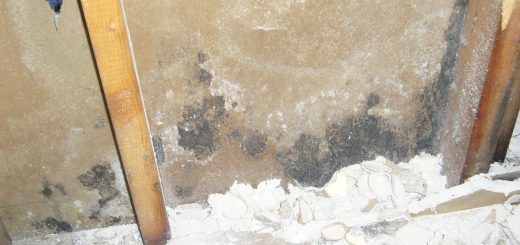Winterizing Your Home Checklist and Tips
While much of the fall weather is pleasant and enjoyable, the chilly temperatures that we start to experience during this season are a reminder of what is to come. Many areas of the country are about to deal with freezing temperatures as well as ice and snow for at least a couple of months and these extreme weather conditions can take a toll on the your home if it is not adequately prepared. The fall season is the ideal time to winterizeTo winterize is the process of preparing a building, plumbin... More your home because the weather is still nice enough to do some outside work. There are plenty of things that need to be done when you are winterizing your home and this guide covers winterization tips that are the most effective for preparing your home for winter.
Prevent Frozen Pipes
The plumbing system of a home is especially vulnerable to the cold weather as the water in the pipes may freeze which will stop the flow of the water or leadLead is a heavy metal that can be toxic to humans, especiall... More to burst pipes. A burst pipe in the winter can be a major hassle to repairRepair is the act of fixing or restoring damaged property, m... More and it can cause significant water damage in your home. The pipes in a home tend to be in the basement or attic which are the least insulated areas so you must take steps to keep your pipes warm enough in the winter to prevent them from freezing. These actions can help prevent burst pipes:
- InsulationInsulation is a material used in buildings to reduce the tra... More: The easiest way to keep pipes in the attic or basement warm in the winter is to install pipe insulationInsulation is a material used in buildings to reduce the tra... More. Pipe insulationInsulation is a material used in buildings to reduce the tra... More is very affordable and available at most hardware stores, and it is also easy to install yourself. Make sure to wrap the pipe insulationInsulation is a material used in buildings to reduce the tra... More around hot and cold pipes.
- Heating Cables: If you live in an area that experiences long stretches of sub-zero temperatures in the winter, heating cables may be more effective than pipe insulationInsulation is a material used in buildings to reduce the tra... More. Pipe insulationInsulation is a material used in buildings to reduce the tra... More is not as effective when the temperatures drop to 10 or 20 degrees below zero but a heating cable will keep the pipes warm enough to prevent freezing. These cables are a little more expensive than insulationInsulation is a material used in buildings to reduce the tra... More but still reasonable and they are also easy to install yourself. Just plug the cable into an outlet or extension cord and wrap it around the pipes.
- Keep the Basement Warm: In addition to keeping the pipes themselves warm, keeping the basement warm will also help prevent frozen pipes. The most effective ways to keep your basement warm are to use a space heater and make sure that all cracks or spaces in the basement walls are filled. You can fill the cracks in the basement wall with spray foam sealer and if you use a space heater to keep your basement warm, do not use it for more than a couple of hours at a time because of the fire hazard they pose.

Make Sure Your Home is Energy Efficient
Since you will most likely be running the heating in your home through much of the winter, it is important to take steps to improve the energy efficiency as you winterizeTo winterize is the process of preparing a building, plumbin... More your home. Drafty doors and windows as well as poor insulationInsulation is a material used in buildings to reduce the tra... More allow heat to escape the home which will make it more difficult and expensive to keep your home adequately heated. The following actions will help you retain the heat while using less energy to make your home more efficient in the winter:
- Check Doors and Windows for Drafts: Between 5 and 30 percent of all energy loss in your home is through the doors and windows. Make sure you check your doors and windows for drafts during the fall and if any of your doors or windows are drafty, you can seal them with weather stripping or by caulking the interior and exterior seams. In addition to caulking and weather stripping, you can help seal your windows with window film and for doors, hanging a blanket can have the same effect as films for windows.
- Inspect InsulationInsulation is a material used in buildings to reduce the tra... More: The purpose of insulationInsulation is a material used in buildings to reduce the tra... More is to hold in heating and cooling for a more comfortable living environment and more efficient energy usage but as insulationInsulation is a material used in buildings to reduce the tra... More gets older, it loses its effectiveness. Check the insulationInsulation is a material used in buildings to reduce the tra... More throughout your home and if there are areas with old insulationInsulation is a material used in buildings to reduce the tra... More, you should consider replacement. New insulationInsulation is a material used in buildings to reduce the tra... More including blown-in cellulose can be installed in older homes for improved efficiency.
- Turn Down Water Heater Temperature: Another way you can improve the energy efficiency in your home for the winter is to turn down the temperature of the water heater. Water heaters normally run at about 140 degrees and turning it down to about 120 degrees will save energy by using less gas or electricity and you will not notice the drop in warmth when you take a shower.
Maintain your Furnace and HVAC System
It is of absolute importance to make sure that your furnace and heating system is functioning properly before entering the long, cold winter. Checking the furnace and air ducts should be an important part of winterizing your home in the fall because experiencing problems with the heating during the winter can be a serious issue. The following tips will help you get your heating system ready for the winter:
- Check the Filter: Ideally, the filter in the heating system should be changed every 30 to 60 days but this task is often forgotten about, especially during the summer when the heat is not in use. Debris from the air is collected in the filter and if it becomes full or clogged, it can restrict air from passing through the system which can eventually cause the system to break down. You should change the air filter in your heating system just before the winter and check it periodically during the winter to change it again when necessary.
- Check Air Ducts for Leaks: If there is a leak somewhere in the air ducts, heat will escape which will lower your energy efficiency. You should check the air ducts in your home for leaks and call a professional for repairs if you notice any leaks. It is also a good idea to have your air ducts professionally cleaned before the winter to have the gathered dust and debris removed from the system.
- Inspect the Furnace: The middle of winter is the absolute worst time for your furnace to malfunction which is why you should have it inspected to locate any problems before the winter. Once again, it is best to hire an HVAC professional to complete this step.

Maintain your Roof
The roof of your home experiences plenty of stress during the winter as the weight of ice and snow puts on much more pressure than the roof is typically used to. Any damage or leak in a roof can become much worse during the winter and even leadLead is a heavy metal that can be toxic to humans, especiall... More to a collapse. Make sure you take the following steps to prepare your roof as you winterizeTo winterize is the process of preparing a building, plumbin... More your home:
- Clean the Gutters: Homeowners should clean out their gutters every fall to remove leaves and other debris. It is especially important to make sure this is done before the winter because if the gutters are clogged, melting snow will stay on the roof where it will form into ice dams that can be very damaging.
- RepairRepair is the act of fixing or restoring damaged property, m... More Loose Shingles: If any shingles on your roof are loose, snow and ice can cause them to fall off which can leadLead is a heavy metal that can be toxic to humans, especiall... More to rotting and roof leaks. You can reattach loose shingles yourself with roofer’s cement and roofing nails but if you do not feel comfortable doing this yourself, you can call a professional.
- Inspect your Roof: Certain potential issues with the roof are not so obvious to some homeowners which is why it is a good idea to have a professional inspect your roof before the winter. A roofing professional can locate all potential problems and let you know what you need to do to get your roof ready for the winter.
As the winter quickly approaches, make sure you get your home ready with these tips for winterizing your home. Effective winterization will help improve the energy efficiency of your home and prevent structural damage as well as water damage from burst pipes. If you do experience significant damage to your home due to winter weather, make sure to contact a restoration professional immediately to help cleanup and restore the damage.












